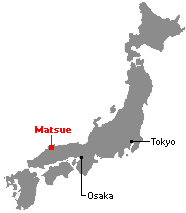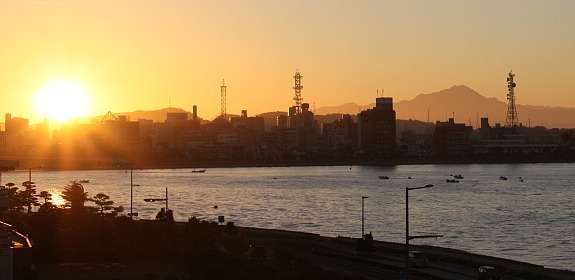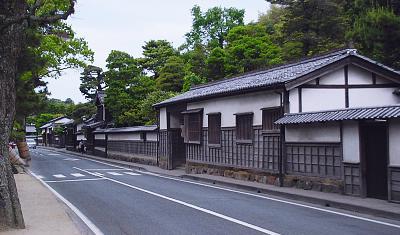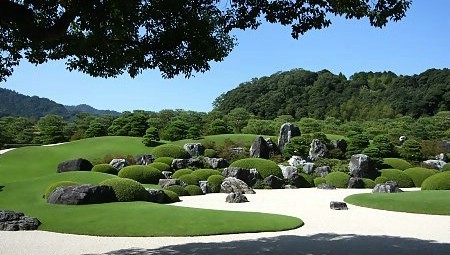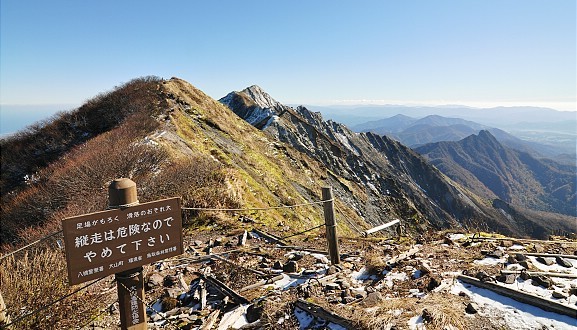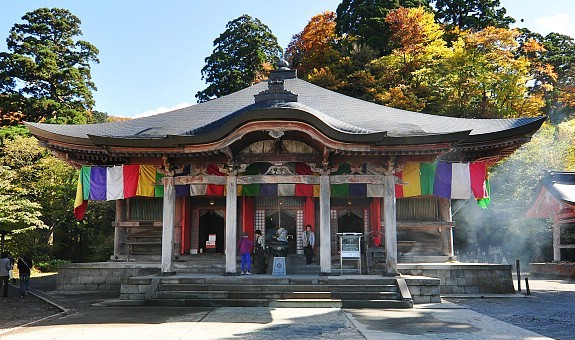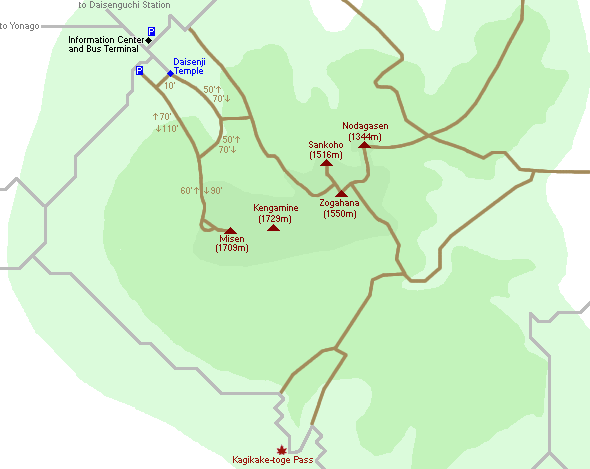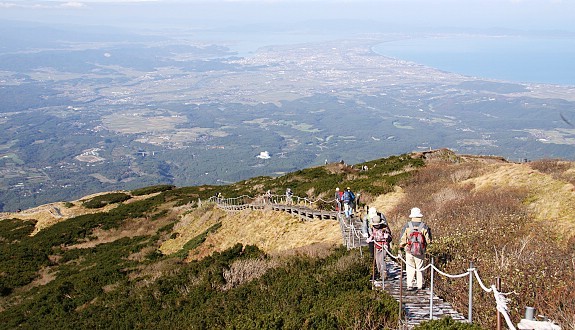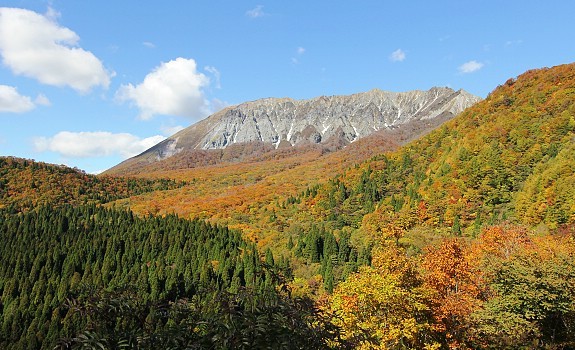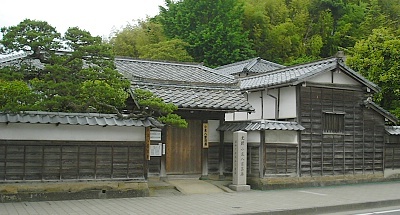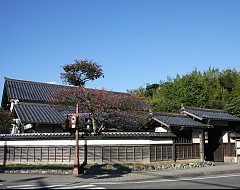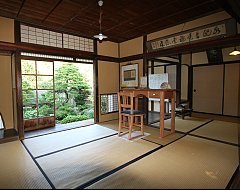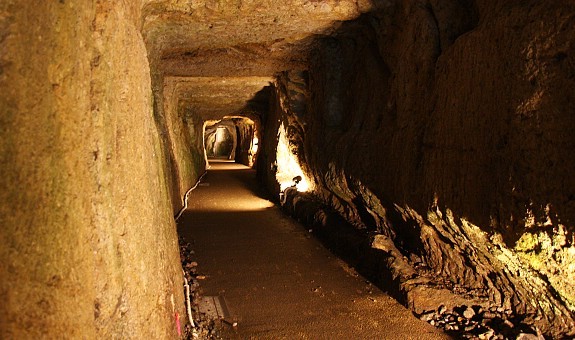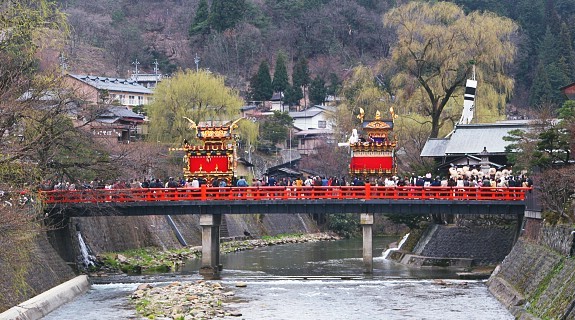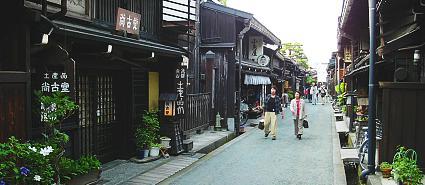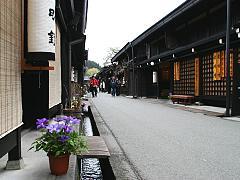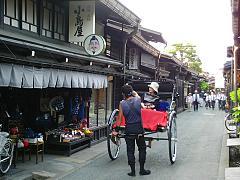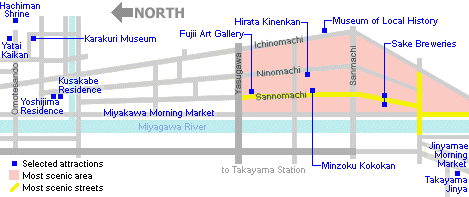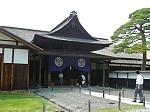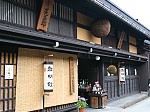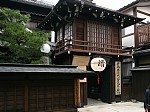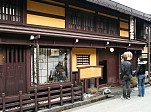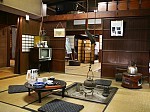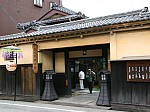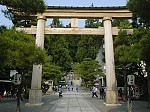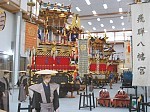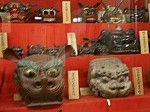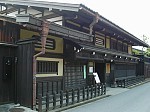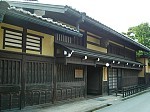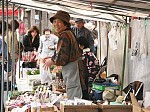Matsue
Matsue is the capital city of Shimane Prefecture, attractively located at the eastern shores of Lake Shinji (Shinjiko). Due to its location between Lake Shinji, Nakaumi (another lake) and the Sea of Japan, Matsue is also known as the "water city".
Matsue's attractions include its original castle and the former residence of Lafcadio Hearn. The city is also a good base to visit nearby Izumo Taisha, one of Japan's most important shrines and the Adachi Museum of Art with one of Japan's most beautiful landscape gardens.
Matsue Former Samurai District
Some of
Matsue's former
samurai mansions have been preserved along the busy road north of
Matsue Castle's inner moat.
Among the buildings is the
Matsue Buke Yashiki, a former samurai residence which is now open to the public. It is a good example of a high ranked
samurai family's mansion in Japan's countryside. Also in the area stands the
former residence of Lafcadio Hearn.
Adachi Museum of Art
The Adachi Museum of Art was founded by Adachi Zenko in 1980 as a way of combining his passions for Japanese
art and
garden design. He hoped that viewing the gardens and artwork together would expand peoples' appreciation and interest in Japanese art.
The Adachi Museum of Art is best known for its award winning
garden. It has been named the best garden in Japan annually since 2003 by the
Journal of Japanese Gardening. The garden can be enjoyed at anytime of the year and shows a different character depending on the season. It can only be viewed from the museum building.
In addition to the gardens, the Adachi Museum of Art also houses a collection of nearly 1300 twentieth century paintings and artworks which are rotated seasonally. There is also a permanent exhibit of paintings by Yokoyama Taikan, as well as a ceramics exhibit.
Mount Daisen
Kengamine Peak viewed from Misen Peak
Mount Daisen (大山, Daisen) is a large, volcanic mountain that rises up from sea level to dominate the terrain of western
Tottori Prefecture. Part of Daisen-Oki National Park, the 1729 meter high mountain is the tallest in the
Chugoku Region and is included on the list of Japan's 100 famous mountains. Daisen has not erupted is several thousand years.
As the most prominent mountain far and wide, Daisen has long been a spiritual icon and a center of mountain worship.
Daisenji Temple, whose buildings are spread out along the wooded slope and are connected by mountain trails, was built near the base of the mountain and is an important
Buddhisttemple. Additionally, the Ogamiyama
Shrine is found further up the trail above the temple.
Daisenji Temple
Daisenji Temple is also the trailhead of the popular
climb up Mount Daisen. The top of the mountain is made up of a ridge with several peaks, the highest of which, Kengamine Peak (1729 m), lies along an unstable knife's edge ridge that has been closed since an earthquake eroded the trail in 2000. Instead hikers can climb as far as Misen Peak (1709 m) which lies just a few hundered meters away.
The trail to Misen Peak is about four kilometers long and takes a strenuous three hours to climb as it is mostly made up of steep stairs. The first section of the trail leads through thick beech forests until hikers are eventually rewarded by spectacular views over the surrounding landscape about half way up the mountain. The last few hundred meters of the trail lead along a series of wooden boardwalks set above the alpine plants and grasses near the summit.
Views from Daisen in direction of Yonago City
A separate network of hiking trails connects Daisenji Temple with multiple lower peaks on the northeastern side of Daisen. The hiking courses vary in length and difficulty level, and some of them are not suitable for beginners. The mountain is typically covered by snow from late November to late April and provides some of western Japan's best
ski slopes.
Around late October and early November, the maple and beech forests that cover the mountain slopes turn brilliant shades of
autumn colors. One of the best places to view the leaves is from a parking lot at Kagikake-toge Pass south of the mountain (not reachable by public transportation).
The southern face of Mount Daisen seen from the Kagikake-toge Pass
Lafcadio Hearn's Former Residence
Lafcadio Hearn, one of the first western authors of Japanese culture, lived in
Matsue for about one year of his life. Hearn's former residence is now open to the public along with a museum located next door that is dedicated to his work and person.
Lafcadio Hearn was born in Greece in 1850 to a British father and Greek mother. Hearn resided in Greece, Ireland, Britain, France and the USA before emigrating to Japan in 1890. There he married a Japanese lady and was naturalized as Koizumi Yakumo, the name he remains known under in Japan.
He is best know for his books that introduced Japan to the western world such as
Glimpses of Unfamiliar Japan, and a collection of translated legends:
Kwaidan: Stories and Studies of Strange Things.
Inside Hearn's former residence
The Hearn Museum next to his former residence
Iwami Ginzan
Iwami Ginzan is a historic silver mine in the mountains of Oda City, Shimane Prefecture. The most prominent silver mine in Japan, it was discovered in the early 16th century and was mined for nearly 400 years.
The main attractions are divided into three areas. The Silver Mine area includes mine shafts and ruins from the area's mining period as well as a few temples and shrines. The Omori Town area includes museums, historical residences, and more shrines and temples.
The final area consists of the onsen town of Yunotsu and nearby port towns, which have their own attractions such as the mooring stones of Okidomari. The port towns are connected to the mining area by two hiking trails that also lead to castle ruins.
The preservation and revitalization of Iwami Ginzan's historic sites began over 50 years ago as a local movement. Eventually gaining prefectural and national support, the area was named a World Heritage Site in July 2007.
ПРОДОЛЖУВА.....
